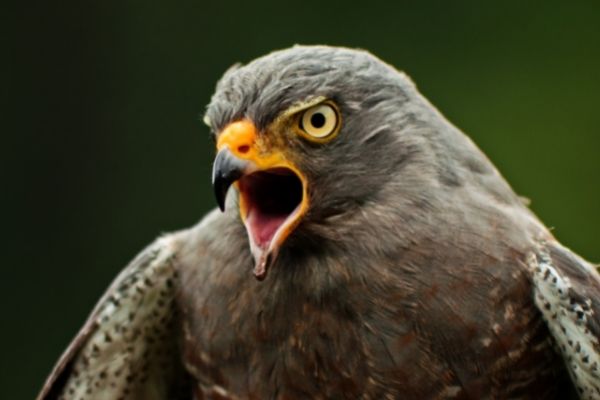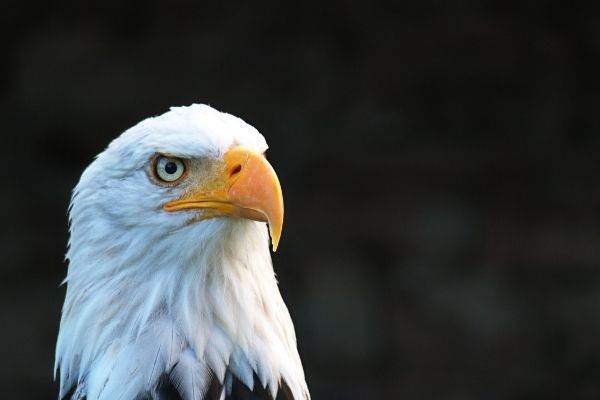Producers are organisms that get their energy from their environment, for example, from the sun or from breaking down chemical compounds. Decomposers are a type of consumer that break down organic matter into simple chemical nutrients essential for producers.
Even though different bird species have different diets, they are all consumers. In ecology, consumers are organisms that get their energy by consuming other organisms. Birds are not producers because they cannot do photosynthesis and are not decomposers, but some are scavengers.
As different types of consumers, birds take up their place at various levels of the food web. From pollinating flowers to controlling insect populations and reducing the spread of diseases from decaying carcasses, birds play an important role in the ecosystem.
Contents
Are Any Birds Decomposers?
Birds are consumers, not decomposers. Decomposers break down organic waste, such as dead plant and animals matter and feces, to essential nutrients that are returned to the soil. True decomposers include bacteria and fungi.
Decomposers digest organic matter externally, by releasing enzymes, and break down organic particles into inorganic chemical compounds such as water, carbon dioxide, nitrogen, phosphorus, calcium and magnesium1.
However, birds such as the vulture and occasionally birds of prey (like hawks for example) act as important scavengers.
Detritivores, including earthworms, millipedes and certain insects, feed on pieces of organic waste, digesting it internally and thereby breaking it down into smaller pieces.
Are Birds of Prey Decomposers?
Birds of prey are carnivorous consumers, not decomposers. Birds of prey include active hunters, like eagles, falcons and owls, as well as scavengers, like vultures. Active hunters catch live prey, whereas scavengers feed on animal carcasses.
While most birds of prey are adapted to a specific feeding style, they are opportunistic omnivore feeders and will eat anything they can find.

Active hunters will feed on animal carcasses when they get the chance, and vultures have been known to kill live prey, like small mammals, lizards or sick and injured animals2.
Are Scavenging Birds Decomposers?
While scavengers, like vultures, play a big role in removing dead animal matter from the environment, they are consumers, not decomposers.
No. Scavengers are not the same as decomposers.
The crucial difference between scavengers and decomposers is that scavengers simply break them down into smaller pieces; they do not break them down into basic chemical nutrients, like decomposers do.

When a large animal dies, scavengers remove pieces of flesh, reducing the mass of organic waste, and scattering the remains.
The remainder of the carcass is then consumed by detritivores, like carrion flies, and broken down by decomposers like bacteria and fungi.
By reducing the mass of the carcass, scavengers reduce the populations of flies and other problematic insects associated with carrion and limit the spread of diseases such as rabies and anthrax3.
Why are Birds not Producers?
Birds are not producers because they cannot produce their own chemical energy. Birds need to eat other organisms to gain energy. Producers, like plants and algae, generate their own chemical energy from sunlight, through photosynthesis.
They use carbon dioxide, water and energy from the sun to make sugar4. Other producers, like chemoautotrophic bacteria, can generate chemical energy by breaking down chemical compounds.
Sulfide-loving bacteria that live around hydrothermal vents in the deep sea, use hydrogen sulfide from the vent with oxygen from the water, to produce sugars5.
Since the lack of sunlight means that photosynthesis is not possible, chemoautotrophic bacteria are the only producers in the food chain of the deep ocean and provide food for various consumers.
What Type of Consumer is a Bird?
Birds can be primary, secondary, tertiary or even quaternary consumers, depending on their diet. Primary consumers are organisms that feed on producers.
Secondary consumers are consumers that feed on primary consumers, tertiary consumers feed on secondary consumers, etc.
Are All Birds Consumers?
All birds feed on other organisms – either plants or animals – therefore they are all consumers. Consumers feed on producers or on other consumers.
What are Examples of Birds that are Primary Consumers?
Avian primary consumers are birds that eat plant matter, so include birds that feed on grains, fruit or nectar. Finches, canaries and sparrows are examples of birds that eat grains.
Parrots, conures, barbets, thrushes, and bluebirds eat fruit, while hummingbirds and sunbirds feed on nectar.

Are Birds Secondary Consumers?
Avian secondary consumers are birds that eat primary consumers. Insectivorous, carnivorous and fish-eating such as pelicans, puffins or albatross bird are all secondary consumers.
What Types of Birds are Secondary Consumers?
Insectivorous birds include bluebirds, woodpeckers, swallows, swifts, wrens, warblers, sparrows, robins and thrushes. Fish eating birds include king fishers, herons, storks, and gulls.
Carnivorous birds feed on mammals or other birds and include birds of prey – such as falcons, eagles, owls, and vultures – and other carnivorous birds such as shrikes, magpies, crows, and jays.

Are Birds of Prey Secondary or Tertiary Consumers?
Birds of prey can be secondary or tertiary consumers. If an eagle were to catch a rabbit, which is mostly a herbivore, then that eagle would be a secondary consumer.
If, however, an eagle were to catch a shrew, which is an insectivore, then that eagle would be a tertiary consumer.
Are any Birds Quaternary Consumers?
Birds of prey can also be quaternary consumers. If a shrew was eaten by a snake and the snake was caught by an eagle, then the eagle would be a quaternary consumer.
There are very few quaternary consumers in an ecosystem, mostly because a big portion of energy gets lost at each trophic level. Most of the energy animals get from their food, gets lost as heat, and only a small portion is saved as biomass6.
Therefore, when a predator (secondary consumer) eats a herbivore (primary consumer), that predator only gains a small portion of the energy that the herbivore consumed.

The implication of this that, in an ecosystem, which contains a limited amount of energy, less energy is available to secondary consumers than to primary consumers.
That is why there is always more prey than predators. Similarly, even less energy is available to tertiary and quaternary consumers.
Conclusion
In an ecosystem, birds can be different types of consumers, depending on their diet. Birds that eat plant matter (producers) are primary consumers, while birds that eat other consumers are secondary, tertiary or quaternary consumers.
However, these definitions are fluid, since many birds are omnivores, meaning they eat a variety of plant and animal matter.
For example, most songbirds eat a combination of grains, fruit and insects, depending on what is available.
Therefore, it is possible for an individual bird to be more than one type of consumer in an ecosystem. In real life, food webs are complicated and inter-connected. Many organisms are not bound to one category of consumer and can play a role at different levels.
References
- Biology Online Editors. 2022. Decomposer. Biology online. https://www.biologyonline.com/dictionary/decomposer
- Avian Report. 2022. Black vulture food habits. Avian Report. https://avianreport.com/black-vulture-food-habits/
- Buechley ER, and Sekercioglu CH. 2016. Vultures: the collapse of critical scavengers. Current biology, 26: 2016 R560 – R561. DOI: 10.1016/j.cub.2016.01.0. https://www.researchgate.net/profile/Cagan-Sekercioglu/publication/305277605_Vultures_the_collapse_of_critical_scav
- National Geographic Society. Food chain. National Geographic Resource Library. https://www.nationalgeographic.org/encyclopedia/food-chain/
- Sara Mynott. 2013. Hot stuff! Life on a hydrothermal vent. Scitable Blog. https://www.nature.com/scitable/blog/saltwater-science/hot_stuff_life_on_a/
- Hickman, C.P., Roberts, L.S., Larson, A., I’Anson, H., Eisenhour, D.J. 2006. Integrated principles of zoology. McGraw Hill. New York, NY. 882 pp.




